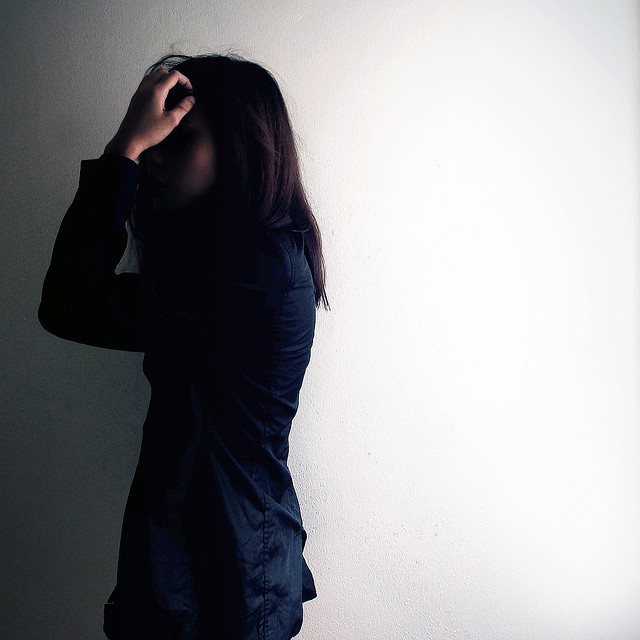
“I am bipolar.”
“She is schizophrenic.”
“He is obsessive compulsive.”
Sometimes (though not always), these are ways that we refer to both others and ourselves if we struggle with mental illness.
Many, many people suffer from diagnosable forms of mental illness throughout the world. Anxiety and depression have even become part of everyday conversation for many of us.
It is crucial to find the proper support if this is something with which we struggle.
It is just as important that we both change the conversation and our perceptions around mental illness as well as the way that we both identify ourselves as well as others who face these challenges.
A diagnosis is a diagnosis. Period.
A diagnosis is a tool.
It is information.
It is a means of identifying various traits, behaviors, or propensities and can be used to describe both mental and physical conditions, and many conditions affect both.
But with anything in this world, some things that can be really helpful can also be somewhat hindering, depending on one’s perspective and their relationship with this diagnosis.
It is within our relationship to any diagnosis that we have a choice, whether this pertains to ourselves or somebody that we know.
Sometimes we get a diagnosis, and we think, “Okay, this is who I am, or this is who they are.”
Sometimes we hear that people that we know are diagnosed with an illness and we start to perceive them as if they are the illness.
We may not do this intentionally, but awareness around these perceptions is so important. Our perceptions are not only important in the way that we relate to the person, but they are also important because they then determine how we will interact with this person or acknowledge them.
Shifting our perceptions may even support them in remembering—-or even realizing for the first time—that they are so much more than the mental illness with which they struggle.
The diagnosis is not something in and of itself that is harmful unless we allow it to lead us to judgment, which ultimately leads us down the road even further to the illusion of separation and our misidentification with the diagnosis itself.
We need to be so careful with what we are identifying in our lives.
For example, some of us identify with being a parent, or a spouse, our role within our careers, and even our belief systems—but if these things are often taken away from us or lost, and it is then that we can feel our worlds begin to slip away from under us.
We can look around all of these aspects of who we believe ourselves to be to really get to know who we are at our core, so that nothing—not even a diagnosis of a mental illness, can shake that foundation.
We can choose to see both ourselves and others for who they really are–despite any type of struggle.
On a soul level, there is beauty.
There is light.
There is curiosity, and there is the desire to love and be loved.
There is the child-like sense of awe, connection, joy and freedom.
It is so important that we see both ourselves and others in this manner, even if it is difficult at times to do so. Any labels of a superficial nature carry with them the propensity to build walls both within ourselves and between us.
Our opportunity, if we know someone who is struggling, or if we are struggling ourselves, is in our choice to see clearly–to see the version of them who came into this world unscathed.
We may have a close friend that is struggling with an eating disorder. We can choose to not think of them as someone who needs “fixing.” Nobody needs fixing, but some can benefit from some support, as we all can benefit from the support of others to a degree.
This timeless part of us is always there, buried under the layers of pain, fear, and any type of illness.
Of course there are many other ways that we can be of support those who suffer, sometimes it is with appropriate action and others it is to just be there to hold space for them as they feel and heal.
At the root of our discernment though is our capacity to truly see them when we choose to do so—and during these moments they might even catch a glimpse of their own beauty in our eyes when they maybe can not clearly feel or see this themselves.
Sometimes people’s thoughts and actions can make this difficult, of course.
If we are the ones who struggle with mental illness, we may do things or say things that instigate guilt or shame. We may see others who are behaving in ways that we do not know how to respond. It is in both of these situations that we have a choice to respond with as much compassion and grace as we can.
We can see emotions and behaviors as information which can act as a teacher and we can allow this to guide us toward appropriate action when needed, and we can choose to do our best to both love ourselves and those who struggle.
We can breathe, and we can choose to see everyone for who they really are, without judgment.
Again, the diagnosis is not the problem—it is the duality that can sometimes come as a result of our labelling or misidentifying ourselves or one another.
This need for duality typically comes as a result of what our minds and egos do to protect ourselves from that which we do not understand, but this can be overridden and replaced with acceptance, compassion and grace.
We can see a diagnosis only for what it is, and that is information. We then have the choice to decide how we will allow our thoughts, words and actions to respond to this.
There is always, always power in the choice.
The diagnosis and the struggle though does not inform us of who we are—any identification of a person with a mental illness is not what is true. It should not serve as a divisive barrier between us, and it should never serve as justification to judge others or ourselves.
Rather, a mental illness diagnosis can be acknowledged in whatever manner is appropriate—then be seen as a call for us to realize the truth in that our similarities outnumber our differences in ways that are so numerous they are not even able to be counted.
We are all in this together.
Relephant:
The Monsters Lurking Behind 8 Mental Illnesses.
A Mother Watches her son slip into Schizophrenia.
Author: Katie Vessel
Editor: Renée Picard
Image: Helga Weber at Flickr






Read 2 comments and reply